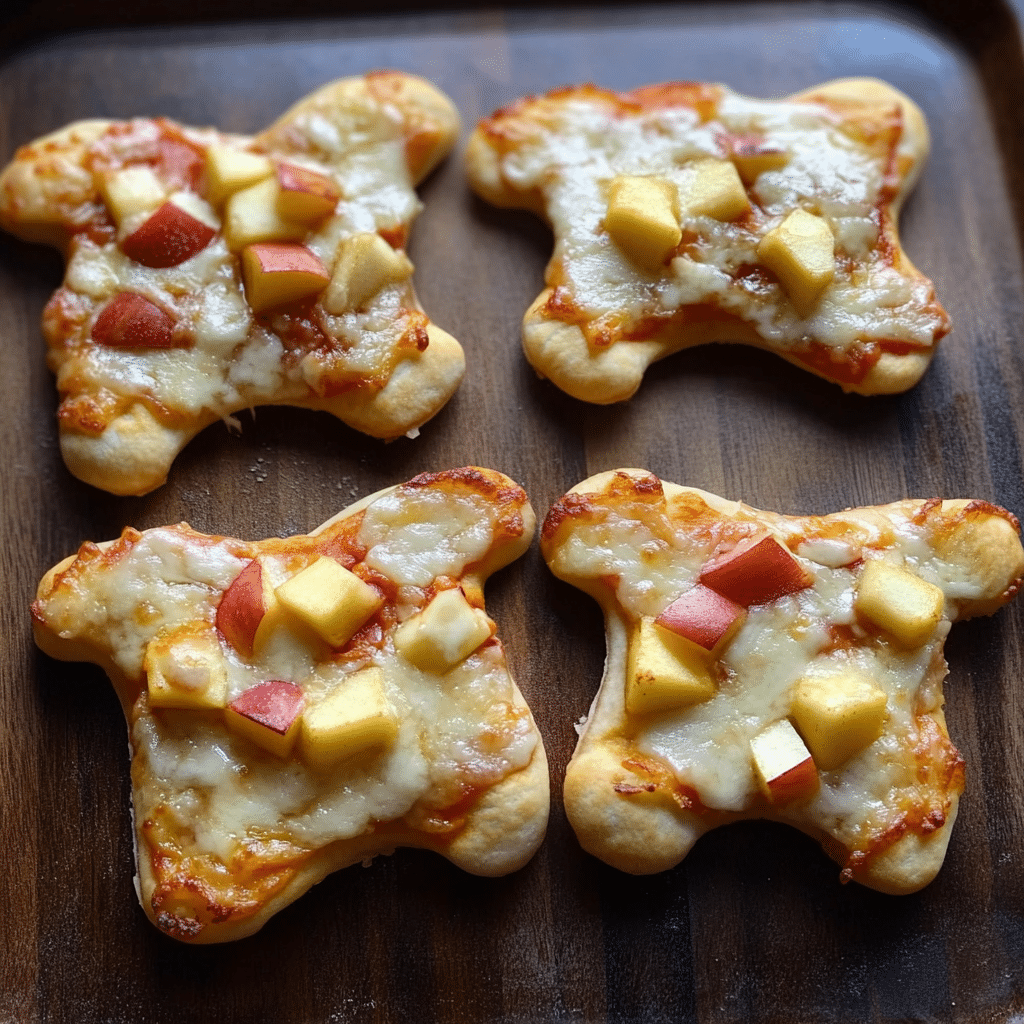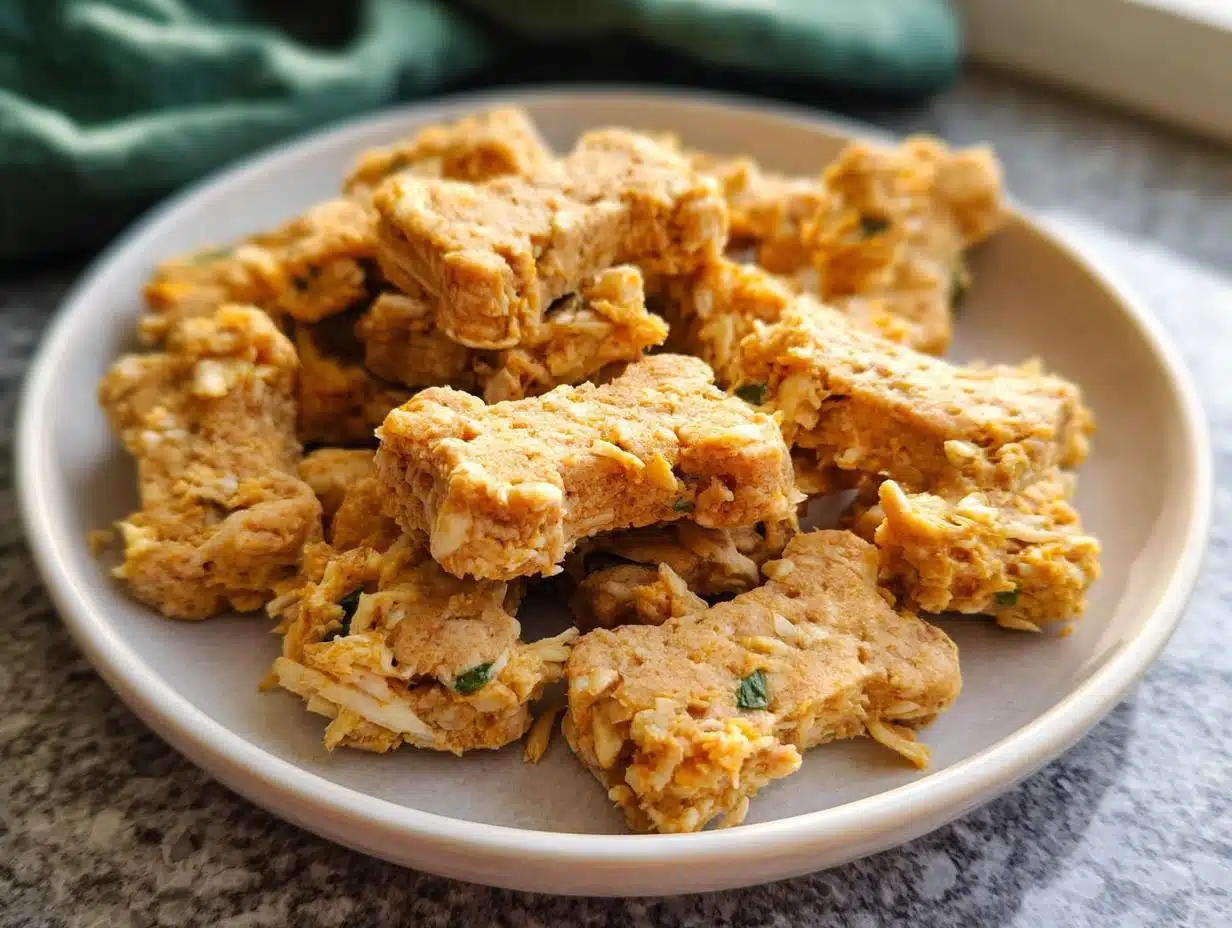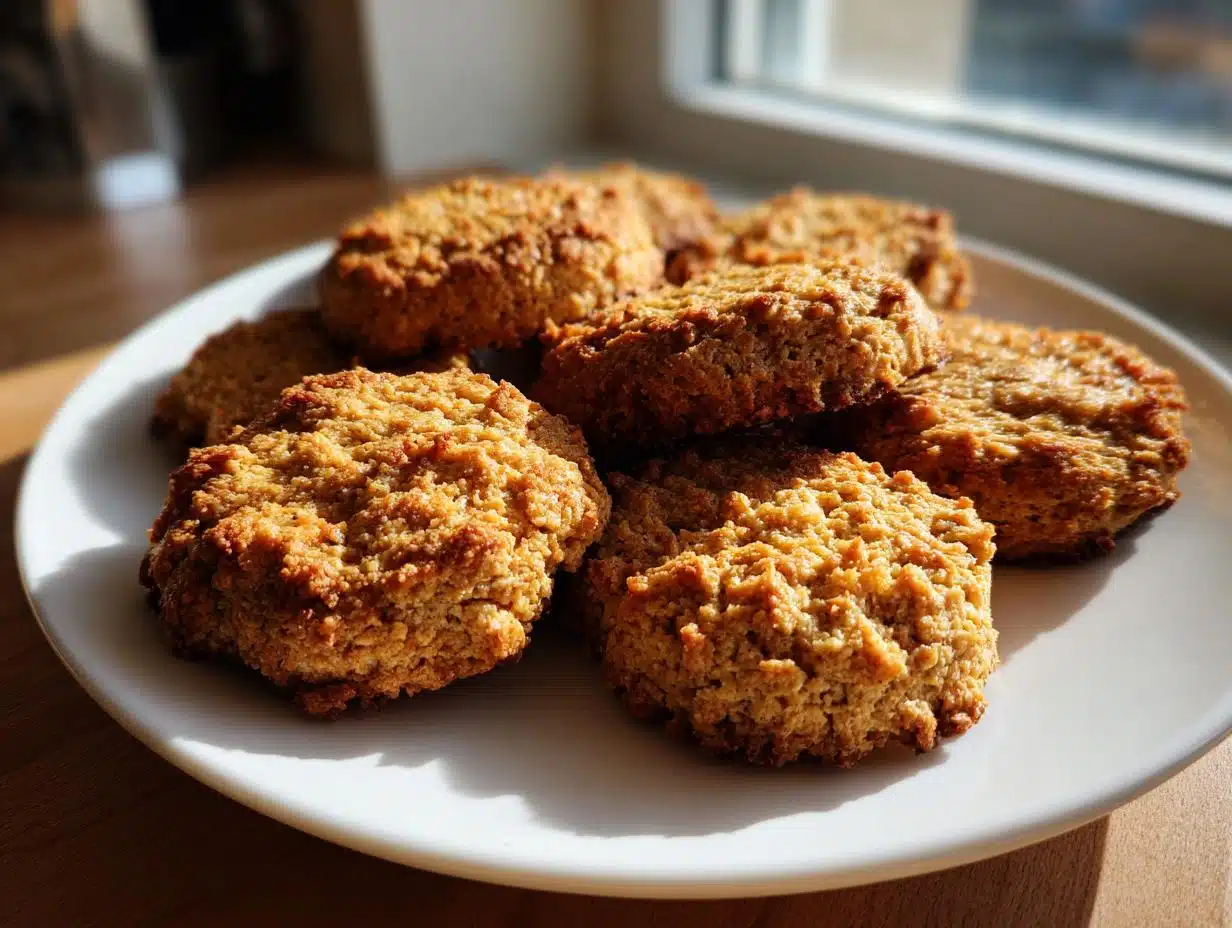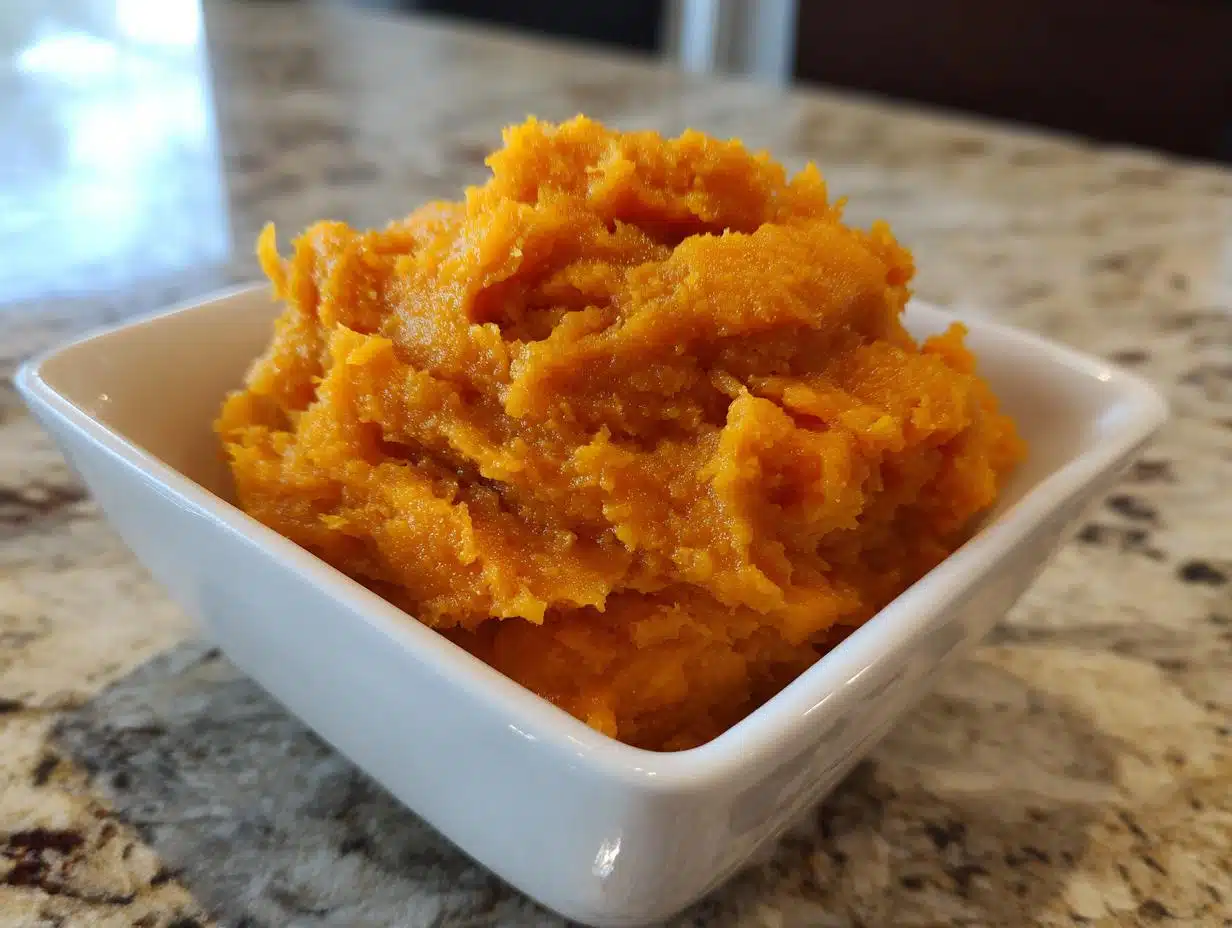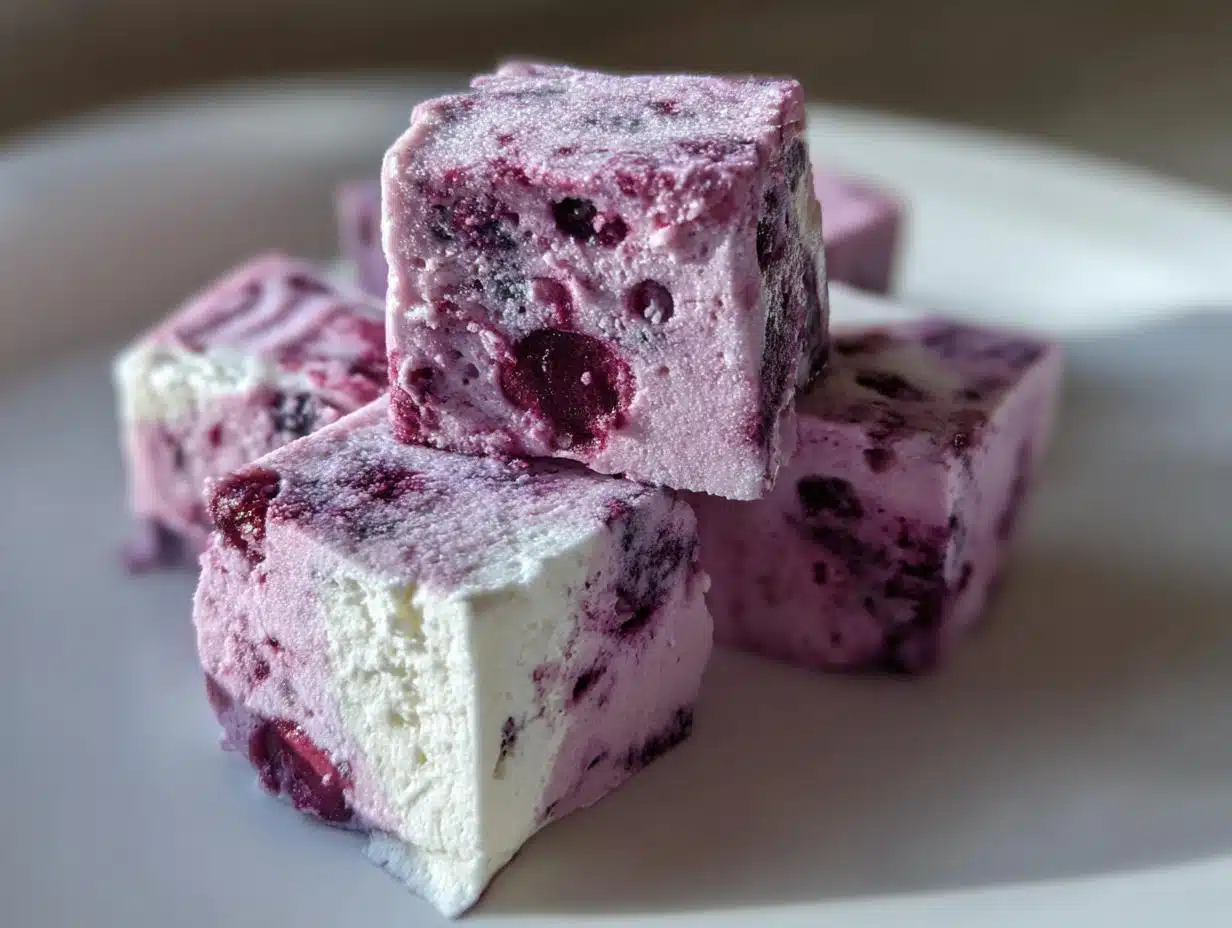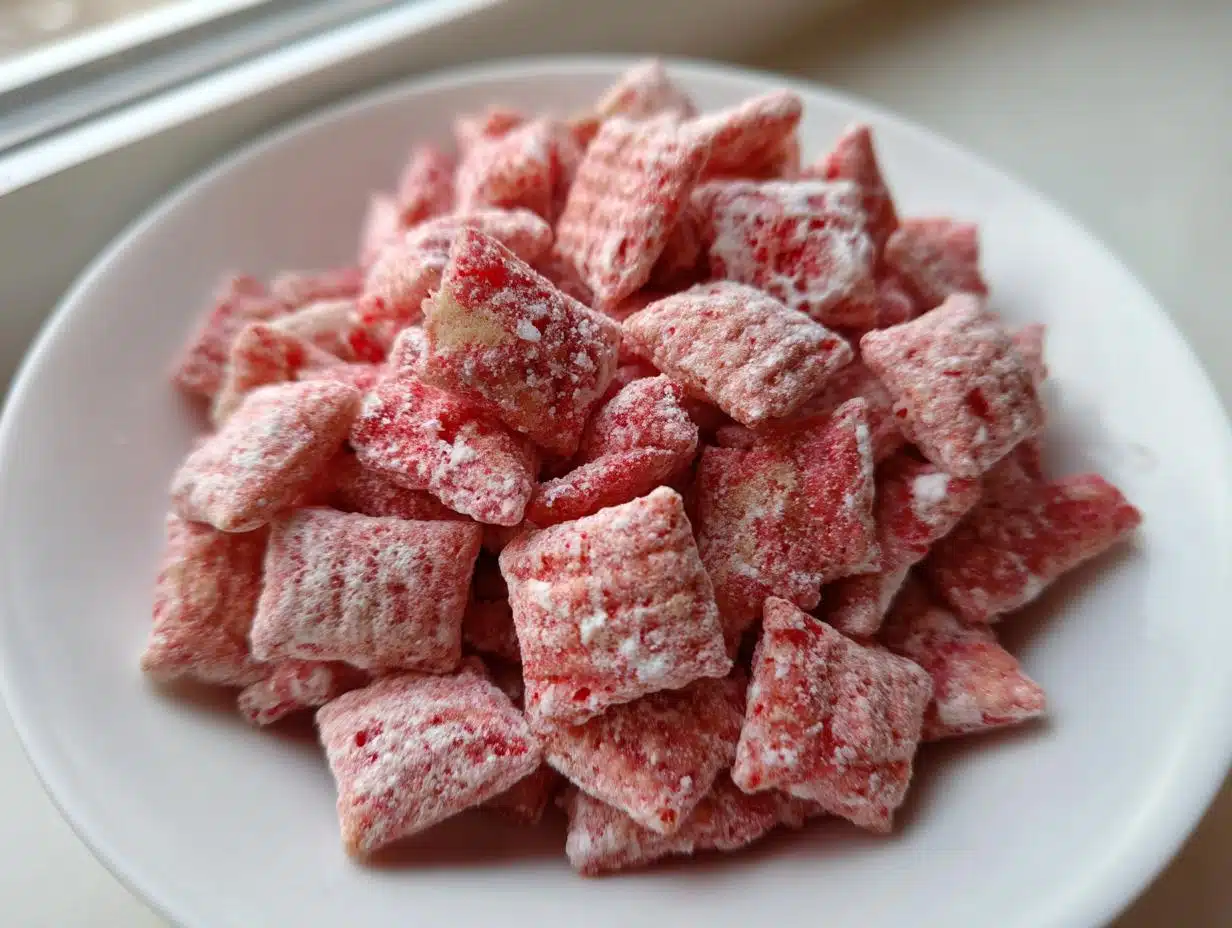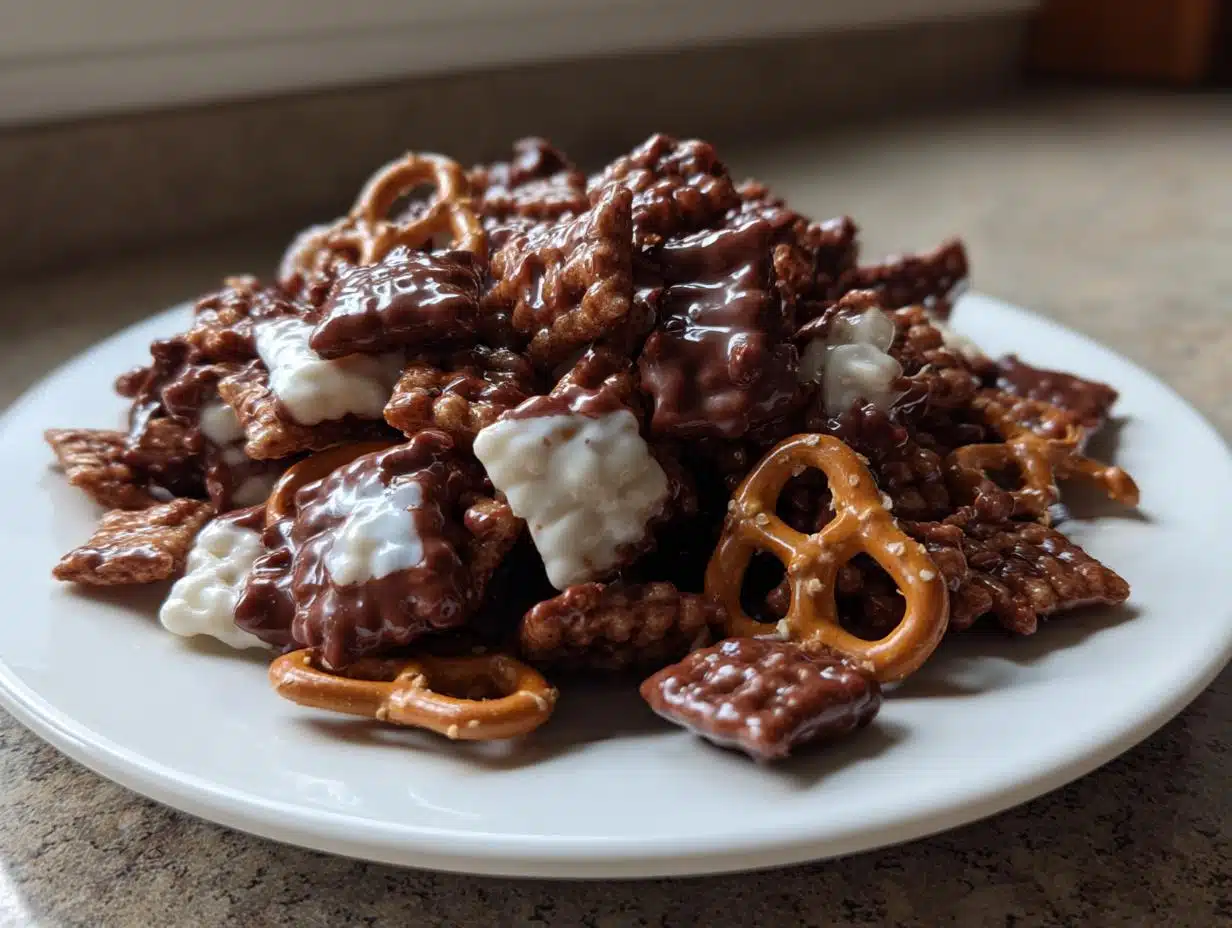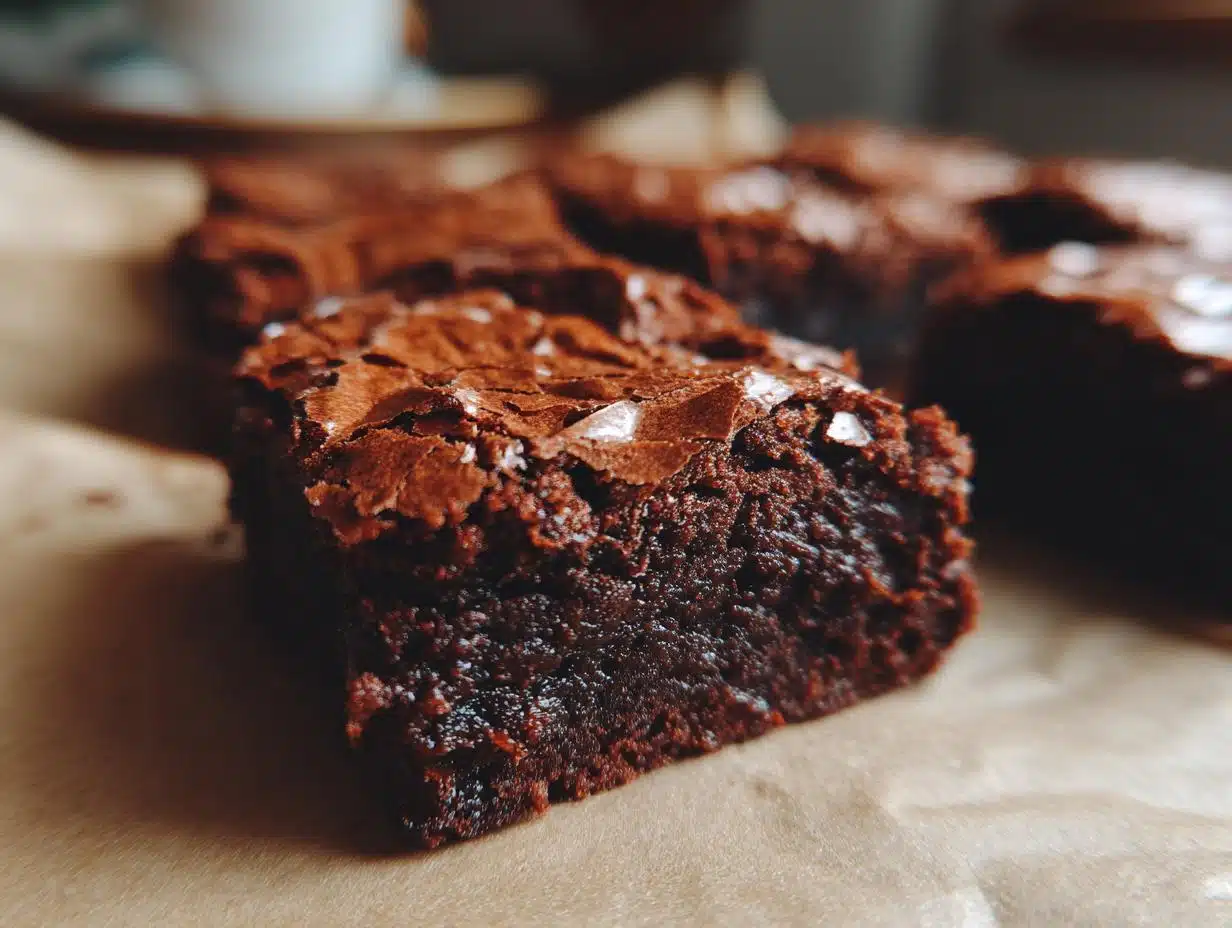Giving your dog a delicious snack that’s both healthy and safe doesn’t have to be complicated. If you’ve been wondering how to make treats at home using ingredients you already have—like apples and cheese—this guide is exactly what you need. In this article, we’re diving deep into how to make Apple and Cheese Dog Bone Pizza, a fun and tail-wagging treat your furry friend will love. We’ll explore why this combo works, the health benefits behind it, a step-by-step recipe, and even compare it with popular store-bought options like Lily’s Kitchen.
Check out this easy apple-based treat that’s a great companion recipe.
Table of Contents
1. Understanding Apple and Cheese Dog Bone Pizza
What is Apple and Cheese Dog Bone Pizza?
Apple and Cheese Dog Bone Pizza is a homemade dog treat that’s crafted in the shape of a bone, combining dog-safe cheese and fresh apples into a pizza-style snack. This isn’t your regular pizza—it’s grain-light or grain-free, designed specifically for dogs using healthy, whole ingredients. You get the satisfaction of giving your dog something special, and they get the joy of crunching into something truly flavorful.
The “pizza” element refers more to the structure—a flat base topped with savory and sweet flavors rather than tomato sauce or spices that can be harmful to dogs. It’s ideal for training rewards, birthday treats, or just everyday love.
Why Combine Apple and Cheese in Dog Treats?
Apples and cheese may seem like an unusual pairing, but for dogs, it’s a match made in heaven. Apples are a natural source of fiber, vitamin C, and antioxidants. Cheese adds protein and flavor plus a creamy texture that dogs go crazy for.
When combined, these ingredients not only create a flavorful bite, but they also balance nutrients offering a mix of fruit sugar and protein. Just like in our featured pumpkin & oat dog cookies, balance is key to creating the best homemade treats.
And don’t worry no dangerous seasonings here. Everything is 100% canine-approved.
2. Health Benefits of Apple and Cheese for Dogs
Nutritional Value of Apples for Dogs
Apples are one of the most dog-friendly fruits. They’re loaded with:
- Vitamin A and C
- Dietary fiber
- Antioxidants
- Phytochemicals that promote gut and heart health
Plus, they’re naturally sweet and low in calories, making them perfect for weight-conscious pups. Apples help clean your dog’s teeth and freshen breath when served in crunchy form. Just be sure to remove the seeds and core these parts contain cyanide and can be toxic.
Is Cheese Safe for Dogs to Consume?
Cheese is generally safe for dogs in small amounts and can be an excellent training treat due to its smell and taste. It’s rich in:
- Calcium for bone support
- Protein for muscle health
- Vitamin B12 and phosphorus
However, not all cheeses are created equal. Opt for:
- Low-fat cottage cheese
- Mozzarella
- Mild cheddar
Avoid cheeses with herbs, garlic, or high sodium. Lactose-sensitive dogs should be monitored, but small amounts are usually tolerated well. Cheese also serves as an excellent binder in dog recipes—like the one we’ll share for our bone-shaped pizza.
Learn more about healthy ingredients in our Homemade Beef Recipes for Dogs that balance flavor and nutrition.
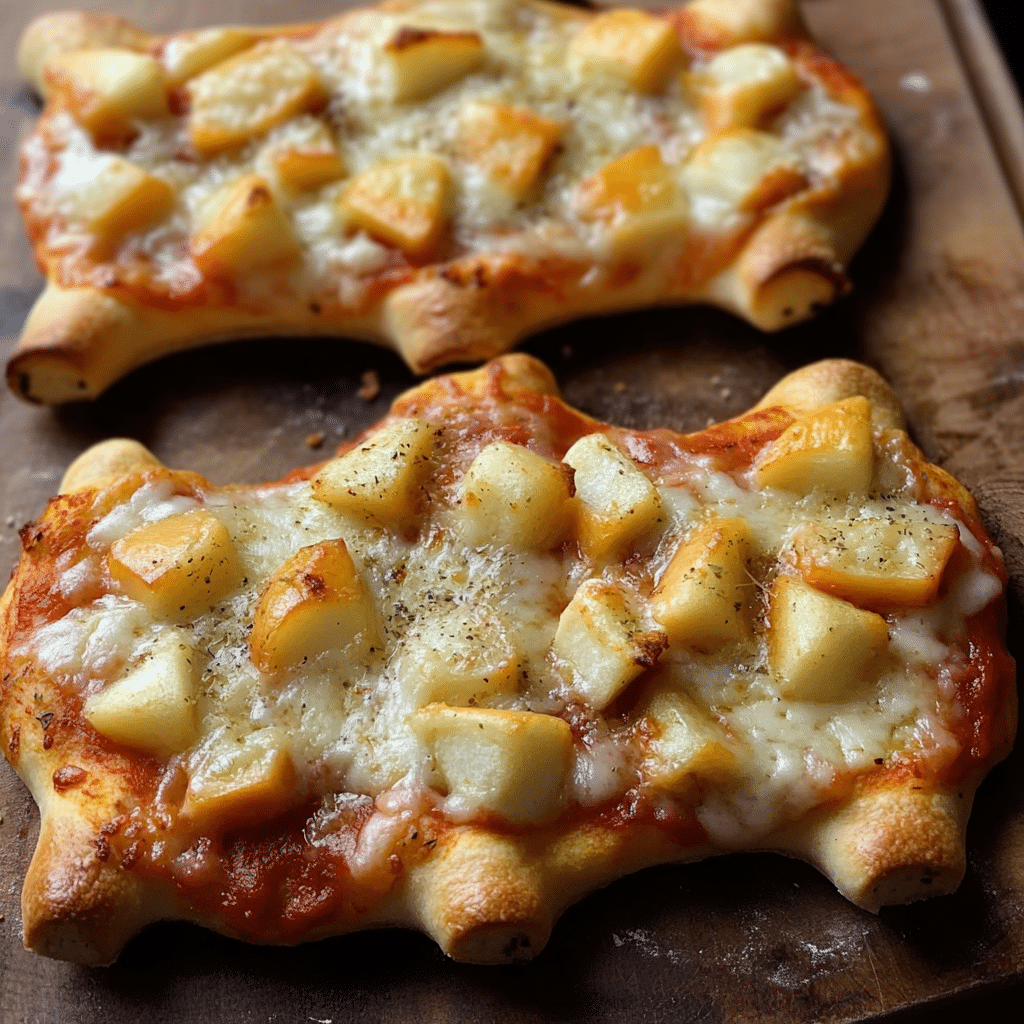
3. Ingredients Breakdown for the Perfect Dog Bone Pizza
Safe and dog-friendly ingredients
When preparing treats like Apple and Cheese Dog Bone Pizza, choosing the right ingredients is essential to keep your dog healthy and happy. Let’s break down what should go into your recipe:
- Whole wheat flour or oat flour: These provide fiber and a chewy texture. Oat flour is ideal for dogs with gluten sensitivities.
- Unsweetened applesauce or finely grated apples: Use organic if possible, and make sure there are no added sugars or artificial sweeteners like xylitol.
- Shredded low-fat cheese: Cheddar, mozzarella, or cottage cheese are good choices. They melt well and are typically easier on a dog’s stomach.
- Eggs: Add structure and protein to the treat.
- A splash of olive oil: Offers healthy fats for your dog’s skin and coat.
- Baking powder (optional): Helps create a fluffier dough but should be used in very small amounts.
Avoid ingredients like onion, garlic, nutmeg, chocolate, or artificial preservatives. These can be harmful or toxic to dogs. If you’re ever unsure about an ingredient, check with your vet first.
What cheese is best for dog treats?
Not all cheeses are made equal—especially when it comes to dogs. Some types are too rich or contain additives that can harm your pet. Here are some of the best cheese options to include in your dog bone pizza:
- Mozzarella: Soft, mild, and lower in fat, it’s a top pick for homemade treats.
- Cottage cheese: Lower in lactose and fat, great for sensitive tummies.
- Cheddar: Common and loved by most dogs, but should be used in moderation due to its higher fat content.
- Swiss: Safe in small doses, but keep it minimal because it can be salty.
Skip the blue cheese, Roquefort, and brie. These can contain molds and high levels of fat or sodium that are dangerous for pets. A good rule of thumb is to always go for plain, unsalted, low-fat versions.
4. How to Make Apple and Cheese Dog Bone Pizza at Home
Step-by-step recipe for Apple and Cheese Dog Bone Pizza
Making this pizza-style treat at home is easier than you think. Here’s a simple recipe you can try today:
Ingredients:
- 1 cup oat flour (or whole wheat flour)
- 1/2 cup unsweetened applesauce or grated apple
- 1/2 cup shredded low-fat mozzarella
- 1 egg
- 1 tbsp olive oil
- 1/2 tsp baking powder (optional)
Instructions:
- Preheat your oven to 350°F (175°C).
- In a bowl, mix the oat flour and baking powder.
- In a separate bowl, whisk together the egg, olive oil, and applesauce or grated apple.
- Combine the wet and dry ingredients, then fold in the shredded cheese.
- Roll the dough out on a lightly floured surface to about 1/4 inch thick.
- Use a bone-shaped cookie cutter or knife to cut out pieces.
- Place them on a parchment-lined baking sheet.
- Bake for 18–22 minutes, or until golden and slightly crispy.
- Cool completely before serving.
The smell alone will have your pup pacing by the oven door!
Preparation tips and safety tips
- Always use fresh apples and shred them just before mixing to avoid browning.
- If using applesauce, choose varieties with no sugar or preservatives.
- Keep cheese portions small to prevent stomach upset.
- For extra crunch, let the treats cool in the oven with the door slightly open after baking.
- Store in an airtight container in the fridge for up to 7 days, or freeze for longer shelf life.
Once you’ve tried this a couple of times, feel free to get creative swap oat flour for chickpea flour, or add a sprinkle of parsley for fresh breath.
5. Customizing the Pizza for Different Dog Needs
Making it for senior dogs or puppies
Not all dogs have the same dietary needs, especially when it comes to age. Puppies require softer textures and higher calories for growth, while senior dogs often need easy-to-chew, lower-fat treats.
To make this pizza more suitable for puppies, try adding a bit more applesauce to make the dough softer. You can also use finely shredded cheese or cottage cheese to reduce the chance of choking. Avoid any crunchy toppings and bake the pizza for less time to keep it tender.
For senior dogs, use low-fat cheese and consider adding joint-supporting ingredients like a dash of ground flaxseed or a teaspoon of turmeric. Bake until firm but not overly hard to protect older teeth. These adjustments make sure your dog still enjoys the treat without strain or digestive issues.
If your dog has known food allergies or sensitivities, always introduce new ingredients gradually. Start with small bites and watch for signs like itching, loose stools, or loss of appetite.
Grain-free or allergy-friendly adjustments
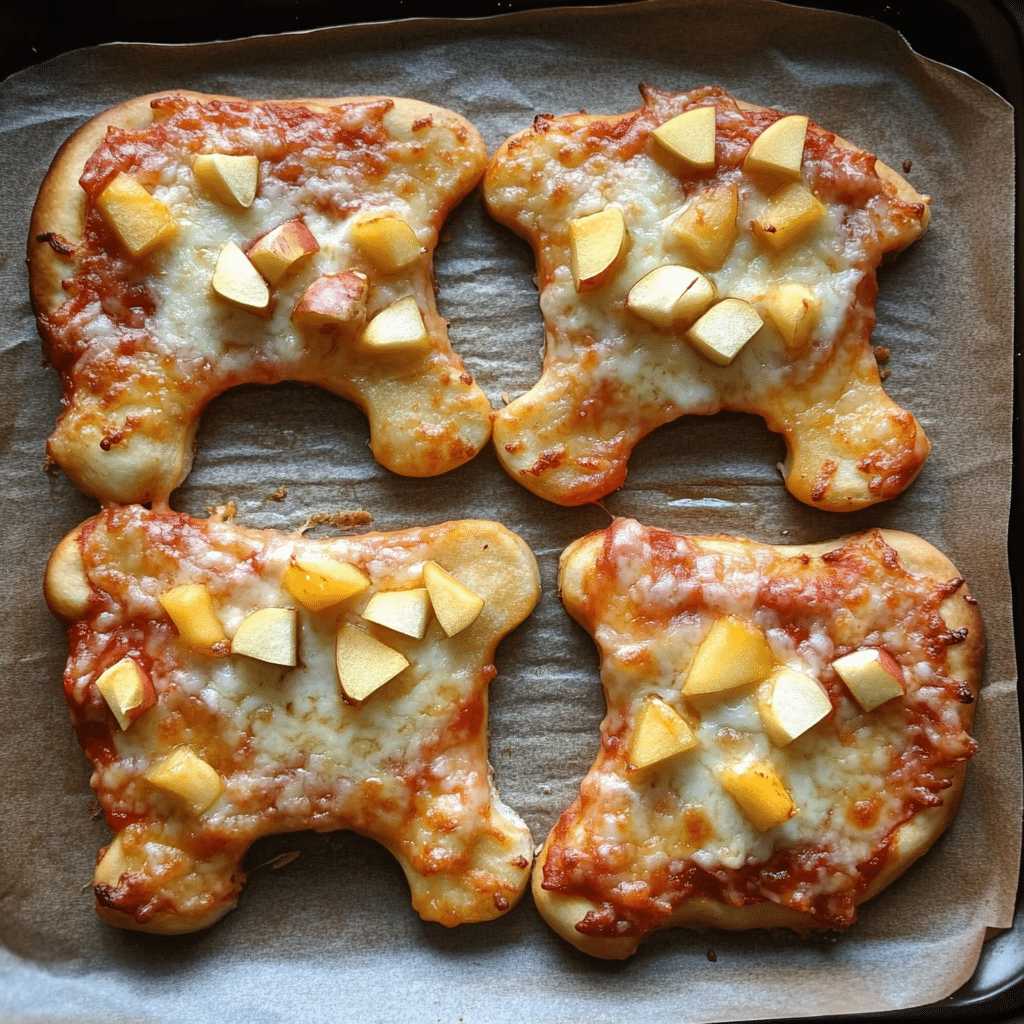
If your pup can’t handle grains or you simply want to keep things as allergy-friendly as possible, switching the flour is a great place to start. Use alternatives like chickpea flour, coconut flour, or rice flour. Each one behaves a bit differently in recipes, so you may need to adjust the moisture content.
You can also substitute dairy-free cheese if your dog is lactose intolerant. Just be sure it’s pet-safe and free from garlic, onion, or added salt. Some dog owners have also used mashed sweet potato in place of apple for variety.
The great thing about homemade treats is how flexible they can be. You can shape them into mini bites for small dogs or larger slices for big breeds. Keep experimenting until you find the version your dog wags hardest for.
Check out other alternative treat ideas in our guide to Homemade Beef Stew for Dogs if you’re thinking of going fully grain-free.
6. Storage and Serving Suggestions
How to store homemade dog treats
Homemade treats like apple and cheese dog bone pizza don’t contain preservatives, so proper storage is important to keep them fresh and safe.
After baking, allow the treats to cool completely on a wire rack. Once cooled, transfer them into an airtight container and refrigerate. Stored this way, they’ll stay fresh for up to seven days. If you’ve made a big batch, freezing is a great option. Place individual treats on a tray in the freezer, and once frozen, move them into a freezer-safe bag or container. They can be stored for up to two months.
If you’re planning to use these treats for training, you can break them into smaller pieces before freezing. Thaw as needed and your dog will still love the texture and flavor.
Avoid leaving these treats on the counter for more than a couple of days. Since they contain cheese and apples, they can spoil quickly in warmer temperatures.
Ideal portion sizes for different dog breeds
When it comes to portion size, one size definitely does not fit all. Small breeds like Yorkies or Chihuahuas should be given a quarter or half of a treat, depending on size. Medium dogs like Beagles or Cocker Spaniels can handle one full treat. For larger breeds like Labradors or German Shepherds, offering two to three bone-shaped slices over the course of the day is usually fine.
It’s important to factor these snacks into your dog’s daily calorie intake. Treats should never make up more than 10% of their total diet. If you’re using the treats for training, remember to reduce portions at meal times slightly to compensate.
Make sure your dog has access to fresh water whenever you’re feeding treats. And if this is your first time introducing apple or cheese, start with a small bite and monitor for any unusual reactions.
Don’t miss our healthy alternative recipe for Pumpkin and Oat Cookies—a great low-calorie option for treat rotation.
7. Comparing with Store-Bought Alternatives
What are Lily’s Kitchen cheese and apple treats?

Lily’s Kitchen is a well-known brand in the dog food world, especially in the UK, known for offering natural, grain-free options. Their cheese and apple treats are bite-sized, oven-baked biscuits made with real apples and cheese, designed for occasional rewarding or training.
These treats are popular for their clean ingredient lists. They contain no artificial colors or preservatives and include other ingredients like yogurt and botanical herbs. While they’re convenient and widely trusted, they can be pricey over time. Plus, you can’t control the ingredient quality or make specific dietary adjustments like you can with homemade versions.
For dog owners looking for a quick grab-and-go snack that’s still relatively healthy, Lily’s Kitchen treats are a decent option. But if you want full control over freshness, customization, and cost, making your own apple and cheese dog bone pizza at home is the better long-term choice.
Homemade treats also reduce packaging waste, let you use local ingredients, and create a bonding moment with your dog that store-bought options simply can’t match.
Homemade vs. store-bought dog treats
When comparing homemade and store-bought options, the biggest differences come down to three things: nutrition, customization, and price.
Homemade treats let you pick organic, locally-sourced, and allergy-friendly ingredients. You can leave out grains, adjust the fat content, and even sneak in supplements if your vet recommends them. Store-bought treats, on the other hand, often contain fillers like soy, corn, or excessive salt and sugar to preserve shelf life.
In terms of cost, homemade treats save you money in the long run, especially if you bake in bulk and freeze portions. While store-bought treats offer convenience, you’re paying extra for branding and packaging.
Overall, if time allows, baking at home gives your pup the freshest, most nutritious treat possible with fewer unknowns and no hidden additives.
8. FAQs
Can dogs eat apple and cheese?
Yes, dogs can safely eat apple and cheese in moderation. Apples offer fiber, vitamin C, and a crunchy texture that many dogs love. Be sure to remove the seeds and core, as those parts are harmful.
Cheese should be given in small amounts and should be low in fat and salt. Stick with plain cheeses like mozzarella or cheddar, and always observe your dog after introducing it for the first time to rule out any intolerance or lactose sensitivity.
This combo is tasty and offers a balance of fruit sugar and protein when given as an occasional treat.
What are Lily’s Kitchen cheese and apple treats?
Lily’s Kitchen offers baked biscuit-style treats made with cheese and apple. These are designed for training or rewarding and include additional ingredients like yogurt and whole grains. While they’re healthier than many generic brands, they don’t offer the flexibility or freshness of a homemade option.
If you want full control over what goes into your dog’s snack, replicating a version at home like our apple and cheese dog bone pizza is a better choice.
How to make dog food with apples?
Making dog food with apples is simple. Start with lean protein like chicken or turkey, add in chopped carrots or spinach, and mix in small apple cubes (peeled and cored). Lightly cook everything until soft and well-mixed.
Avoid adding onion, garlic, or any seasonings. Apples pair especially well with oats, sweet potatoes, or brown rice. You can also purée apples and mix them into homemade dog stews.
What cheese is best for dog treats?
The best cheeses for dogs are low-fat, low-sodium options like mozzarella, cottage cheese, or mild cheddar. They melt easily and are less likely to cause digestive upset. Always check labels for hidden ingredients and avoid seasoned or spicy varieties.
Go easy on the quantity. Even with low-fat cheese, moderation is key to avoid weight gain and stomach issues.
Is cheese ok for dogs?
Cheese is okay for most dogs in moderation. It can be a useful high-reward treat during training due to its strong smell and taste. That said, some dogs are lactose intolerant, so start small and monitor how your dog reacts.
Opt for plain, unsalted cheese and avoid anything processed. If your dog shows signs of bloating or diarrhea after eating cheese, it may be best to skip it.
For more recipes follow me on PINTEREST

